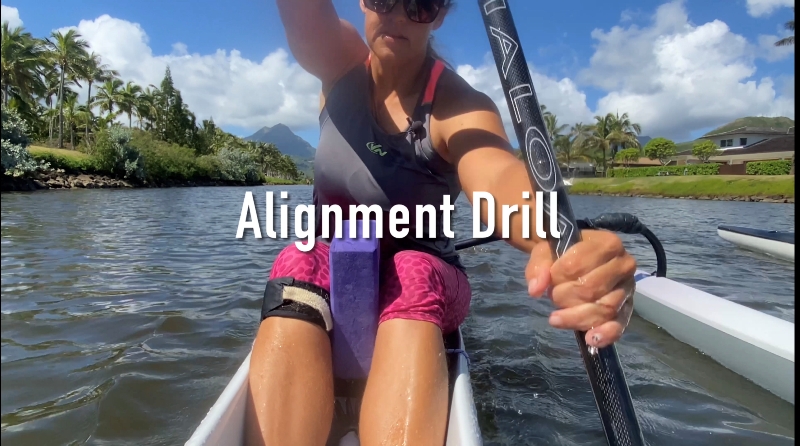Is your outrigger canoe ama hurting you?
Being an athlete and dealing with injuries go hand in hand. We’ve all pulled or tweaked something, or had a nagging injury that doesn’t go away on its own.
While many injuries have an obvious origin and you may know exactly why something hurts, others are more mysterious. One area that I think is overlooked is how paddling outrigger canoes while leaning left can cause injuries.
I know this from personal experience. I have suffered because of the ama on my OC1. Or rather, I have suffered because I ignored the importance of learning to paddle with good alignment, instead of leaning left on my ama.
Before I put such a huge emphasis on developing my brace stroke and learning to sit centered in my OC1 so that I could paddle with good alignment, I developed chronic pain in my left shoulder and my right hip.
How does your ama cause injuries?
In my experience, the single most underestimated part of paddling outrigger canoes is the impact of your ama on your paddling technique.
Think about your right hip and pelvis position when you sit leaning left-heavy and taking paddle strokes on the right side. If your right knee is turned inward and your pelvis is twisted, then your lower back, sacrum, glute and leg muscles will be tweaked and the joint misaligned as you pull and rotate your way through the stroke.
Another example is the left shoulder when you are paddling on the right side. If you are leaning towards the ama, or away from your catch on the right, then your left shoulder is going to be in a compromised position. It is very common to see rounded shoulders as paddlers try to get the catch on the right side, while leaning away from it. What often happens is that the pectorals and bicep will shorten and tighten, your upper back muscles will elongate and be weak, and your thoracic extension will be compromised which will impact rotation as well.
In both cases the joint is misaligned, and with the thousands and thousands of strokes we take, our bodies are at risk of injury from muscle imbalance and joint impingement when the joint is loaded incorrectly with each stroke. This leads to less strength and chronic pain.
Learn to brace and stop leaning left
Posture and alignment in the canoe are some of the most common things I coach paddlers on to improve their paddling. You can start to improve this on your own right away, by working on your brace stroke and practicing paddling while sitting centered.
Last month I sent an article detailing the steps to learn to fly your ama. This month I made a video of those steps to really encourage you to get out there and practice.
Watch How To Brace in Five Steps
Your OC 1 ama is not meant to be leaned on. It’s there for stability, when you need it, but it is not there to prop you up. Here are a couple of key ways you can apply your brace stroke:
- When you are resting between intervals or waiting for your friends, sit with your paddle on the right side in the brace position and adjust your pelvis to neutral. Make this your default resting position.
- Look at your knee alignment while paddling and continually re-adjust your ankle-knee-hip into alignment.
- Practice your brace stroke at the start and end of every training session.
- Get on and off your canoe on the non-ama side.
OC 1 balance skills are essential and improving them will boost your confidence, strength and speed, and keep your body healthy. Let’s get rid of those mysterious one-sided pains and help our bodies out with a little more balance!

